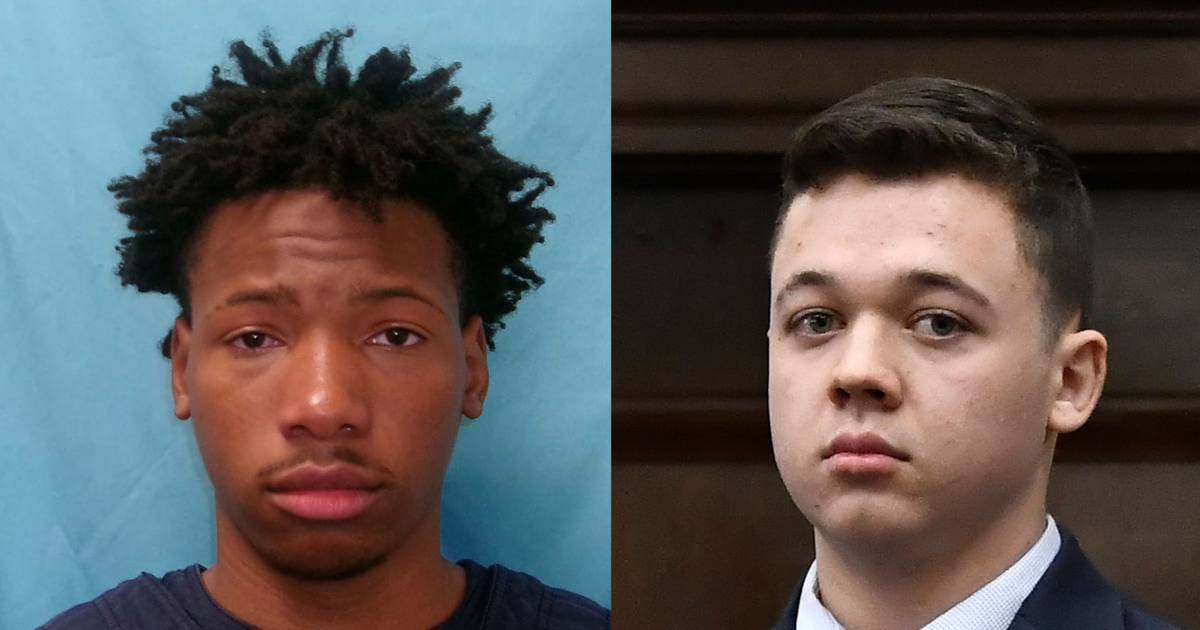When Kyle Rittenhouse walked toward police officers after shooting three people—killing two—at a Kenosha protest, he was treated like a misunderstood teen. News outlets framed him as a scared boy trying to protect property. Conservative pundits called him a hero. Within days, he had high-profile legal support, cable news interviews, and a cult following that included Republican lawmakers. White America embraced him with open arms.
Now flash forward to April 2025: 17-year-old Karmelo Anthony is accused of stabbing another teenager, Austin Metcalf, during a high school track meet in Frisco, Texas. There was no armed self-defense claim, no militia cosplay, no political grandstanding. Just a tragedy involving two kids—and yet, the narrative has already condemned Karmelo as a monster.
Let’s be clear: one incident involved someone who crossed state lines with an AR-15 and killed people. The other was a fatal altercation between two high school students over a tent. And yet, it’s Karmelo who’s immediately treated like a seasoned criminal, locked up on a $1 million bond with zero public sympathy or national media nuance.
Where are the think pieces about adolescent brain development? Where are the TV interviews with his mother? Where are the GoFundMes hosted by people screaming about “cancel culture” and “our boys being targeted”? They don’t exist—because Karmelo is Black. And in this country, Black children are rarely seen as children. They’re threats, suspects, or statistics before they’re ever offered grace.
This is what racial bias looks like in real time. It’s not always a slur or a burning cross—it’s the way white America will bend over backward to humanize Kyle Rittenhouse while ignoring or dehumanizing Karmelo Anthony.
Even if the justice system treats them both as minors, society already made up its mind: one gets to be a misguided kid, the other gets to be a cautionary tale.
And that difference can be deadly.
Incident Details and Legal Developments
On April 2, 2025, during a track meet at Kuykendall Stadium in Frisco, Texas, an altercation occurred between Karmelo Anthony, a student at Centennial High School, and Austin Metcalf, a student at Memorial High School. Witnesses reported that the confrontation began when Metcalf asked Anthony to move from under a tent designated for Memorial’s team. Anthony allegedly responded, “Touch me and see what happens.” When Metcalf made physical contact, Anthony reportedly pulled a knife from his backpack and stabbed Metcalf in the chest. Metcalf died at the scene, despite attempts by first responders to save him.
Anthony was arrested and charged with first-degree murder. Initially held on a $1 million bond, a judge later reduced it to $250,000. Anthony was released on bond and placed under house arrest with conditions including wearing an ankle monitor, being supervised by a parent or designated adult at all times, and refraining from using social media or contacting Metcalf’s family.
Anthony’s defense attorneys have indicated that they will argue self-defense, citing his lack of prior criminal history and his roles as captain of both the football and track teams.
Comparative Media and Public Responses
The contrasting reactions to Kyle Rittenhouse and Karmelo Anthony highlight disparities in media coverage and public perception. Rittenhouse, who fatally shot two individuals during a protest, was often portrayed sympathetically in the media, with narratives focusing on his background and intentions. In contrast, Anthony, involved in a fatal incident during a school event, has faced immediate vilification, with less emphasis on his personal history or the context of the altercation.
This disparity underscores broader issues of racial bias in media representation and public discourse, where Black youth are frequently denied the presumption of innocence and the complexity afforded to their white counterparts.
The cases of Kyle Rittenhouse and Karmelo Anthony serve as a stark reminder of the racial biases that permeate media narratives and public perceptions. While both involve teenagers in fatal incidents, the divergent treatments they receive reflect systemic inequalities in how society views and judges individuals based on race. Recognizing and addressing these disparities is essential in striving toward a more equitable and just society.
